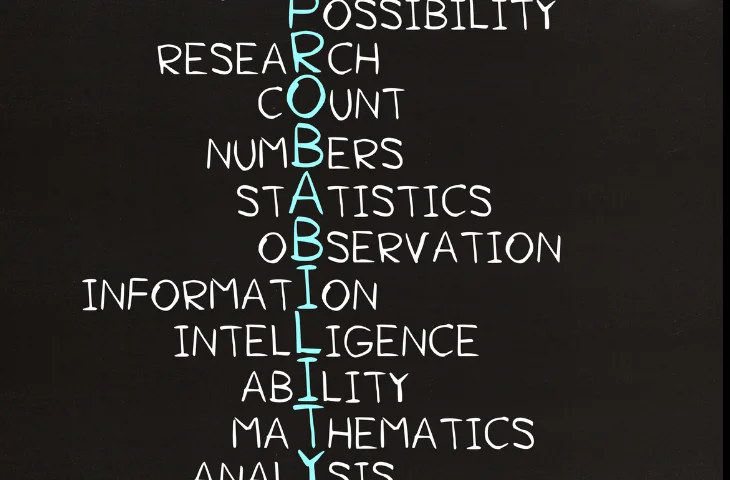Probability is a key topic in Quantitative Aptitude that helps us understand how likely an event is to happen. It measures chances and possibilities in everyday situations and exam problems. In this blog, we have provided the definitions, Probability Tips and Tricks, important formulas, types of questions, tricks, and solved examples from recent exams, and more.
What Is Probability in Quantitative Aptitude?
Probability is a branch of mathematics that quantifies the chance or likelihood of an event happening. It is expressed as a ratio or fraction ranging from 0 (impossible event) to 1 (certain event).
Why does it appear in exams?
Probability questions test your logical reasoning and numerical calculation skills. They assess your ability to analyze different scenarios and calculate chances based on given conditions. These problems are relatively straightforward and quick to solve when you know the right approach.
Skills required:
- Logical reasoning
- Basic fraction and ratio understanding
- Analytical thinking and scenario visualization
Why Is Probability Important in Competitive Exams?
Probability is a topic that has easy to moderate level questions in many exams, making it a good scoring area if prepared well.
| Exam | No. of Questions | Difficulty |
| SSC CGL / CHSL | 1–2 | Easy |
| IBPS PO / SBI PO | 1–2 | Moderate |
| RRB NTPC / Group D | 1 | Easy |
| State PSC / Police | 1–2 | Moderate |
Probability Tips and Tricks Short Notes
Understanding basic terms and concepts is key to solve the Probability questions.
| Term | Details |
| Experiment | A process that leads to one or more outcomes |
| Event | A specific outcome or group of outcomes |
| Sample Space (S) | All possible outcomes of an experiment |
| Probability (P) | P(Event) = Number of favorable outcomes / Total outcomes |
| Certain Event | Probability = 1 |
| Impossible Event | Probability = 0 |
| Complement of Event | Outcomes not in the event |
| Independent Events | Events where outcome of one does not affect another |
Concepts Used in Probability
Common concepts used to help solve probability questions are as follows:
| Concept | Explanation |
| Probability Formula | P(E) = Favorable outcomes / Total outcomes |
| Complement Rule | P(not E) = 1 – P(E) |
| Addition Rule | P(A or B) = P(A) + P(B) – P(A and B) |
| Multiplication Rule | P(A and B) = P(A) × P(B) if independent |
| Conditional Probability | P(A |
What Are the Types of Probability Questions in Quantitative Aptitude?
Probability questions are asked in various forms.
- Direct: Basic probability calculation from given data
- Puzzle-based: Probability mixed with logical puzzles
- Coded (symbol-based): Probability expressed through symbols or codes
- Mixed-concept Quantitative Aptitude: Combined with permutation, combination, or statistics
Probability Formulas for Quantitative Aptitude
Some of the key formulas and mental shortcuts to speed up your calculations:

Probability Tips and Tricks for SSC CGL and Other Exams
Some quick strategies to solve Probability questions faster are as follows:
- Always identify the total sample space first.
- Break down complicated events into simpler independent events.
- Use the complement rule to simplify “at least one” type questions.
- Memorize key formulas but understand their application deeply.
- Use elimination in multiple-choice questions to narrow down answers.
- Draw simple diagrams or tables to visualize outcomes.
Solved Probability Questions from 2024–25 Exams

Probability Concepts for Bank Exams
Bank exams often include probability questions embedded in coded formats or logic trees. For example, they might ask the probability of selecting a candidate with specific attributes from a group represented by symbols or letters. Understanding how to decode these symbols and apply probability rules is essential for quick accuracy.
Example: If ‘A’ stands for candidates skilled in ‘X’ and ‘B’ for ‘Y’, find the probability that a randomly selected candidate is either ‘A’ or ‘B’ using union rule.
Common Mistakes to Avoid while Solving Probability
Common mistakes candidates must avoid while solving probability questions are as follows:
- Incorrect Sample Space Calculation: Always count total possible outcomes correctly.
- Ignoring Complement Rule: Often simplifies problems but many skip it.
- Mixing Independent and Dependent Events: Know the difference and apply correct formulas.
- Overlooking Mutually Exclusive Events: Don’t add probabilities of overlapping events directly.
- Misreading Question Conditions: Carefully analyze wording to avoid errors.
FAQs
Focus on understanding formulas and practice shortcut methods like the complement rule to quickly calculate probabilities.
Questions where events are represented by symbols or codes instead of direct numbers, requiring decoding before solving.
Generally, yes. Probability questions tend to be more straightforward.
They can be if concepts are unclear, but quick methods reduce time drastically.
Yes, often with permutation, combination, and set theory.
- IBPS PO Mains Scorecard 2025 Out Soon, Check and Download Marksheet
- SSC CGL Tier 2 Study Plan 2025 for Last 15 Days Before Exam
- SBI SCO Salary 2025, In Hand Salary, Perks and Allowances
- SBI SCO Syllabus and Exam Pattern 2025, Post-Wise Syllabus
- SBI SCO Recruitment 2025, 996 Posts, Apply Now
- IBPS PO Personality Test 2025 Pattern, Questions, Dates
Hi, I’m Tripti, a senior content writer at Oliveboard, where I manage blog content along with community engagement across platforms like Telegram and WhatsApp. With 3+ years of experience in content and SEO optimization related to banking exams, I have led content for popular exams like SSC, banking, railways, and state exams.
